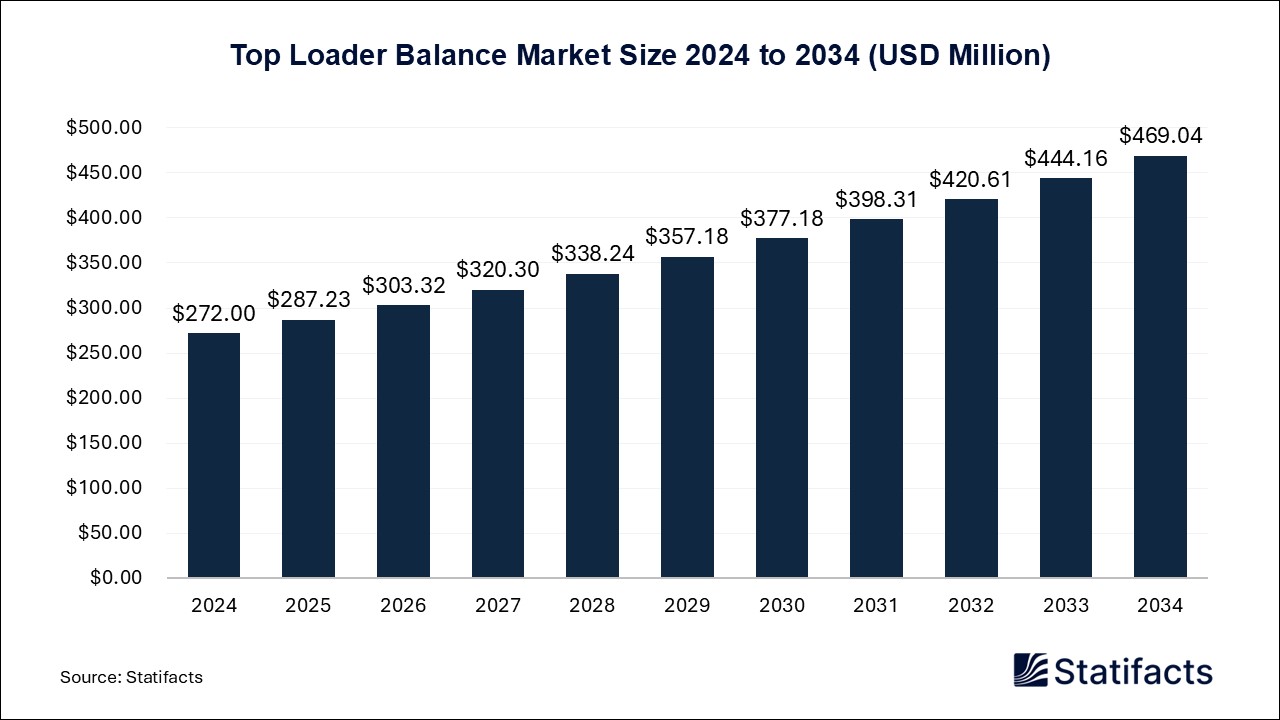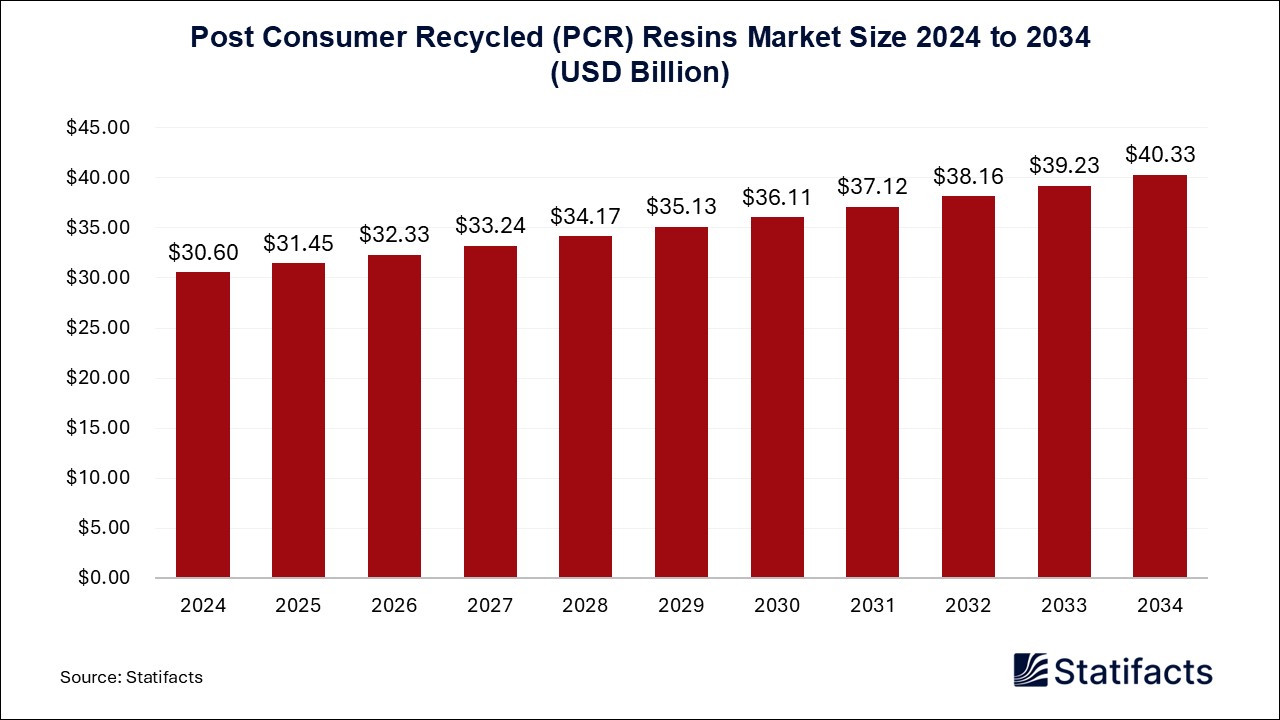Last Updated: 04 Jul 2025
Source: Statifacts
By clicking “Accept All Cookies” you agree to the storing of cookies on your device to enhance site navigation, analyze site usage, and assist in our marketing efforts.
Privacy PolicyThe global power distribution market size was evaluated at USD 1597 million in 2024 and is expected to grow around USD 4,710 million by 2034, registering a CAGR of 11.42% from 2025 to 2034. The global power distribution market has been steadily increasing thanks to higher electricity demand, maintenance and upgrades to aging grid infrastructure, and increased adoption of smart grid technologies. There are also more renewable energy resource-related considerations, as well as urbanization occurring in this space. North America dominates this market and offers the latest and greatest in infrastructure and modernization of distributing energy. Alternatively, Asia-Pacific has the fastest growth rate of global distribution and is being driven by industrialization, investments, and government subsidies for smart grid technologies.
| Industry Worth | Details |
| Market Size in 2025 | USD 1,769 Billion |
| Market Size by 2034 | USD 4,710 Billion |
| Market Growth Rate from 2025 to 2034 | CAGR of 11.42% |
Power distribution represents the last point in the delivery of electricity. It is defined as the movement of electricity from a transmission system to an end user without going over that network. Power distribution delivers electricity to the end consumer through a combination of distribution substations, transformers, and distribution lines. Power distribution is applied through a service and enables residential, commercial, and industrial applications, ensuring they can draw electricity continuously and safely. Power distribution technology can be embedded into many industries, including manufacturing, real estate, healthcare, transport, data centers, and smart cities. Advances in renewable integration, also with decentralization of the grid and digital solutions in monitoring, are widening the applications of power distribution systems, creating further pathways for innovation in both developing and developed as well.
Artificial Intelligence (AI) empowers power distribution improvements through, among other things, better overall efficiencies of the grid, better demand forecasting through improved predictive analytics through predictive maintenance analytics, analytics, and better fault detections. The combination of AI and predictive analytics allows companies to analyze real-time energy consumption and optimize the electric load so that there are no outages and without losing potential energy due to generation capacity.
There are commercial organizations such as Schneider Electric and Siemens AG, which have integrated AI as a part of their respective smart grid strategies as an electricity supplier or utility providers, so that AI identifies areas of overload and/or under-use where maintenance and downtime are minimized for their utility customers and organizations. AI provides reliable and productive integration of available variable resources, such as renewable energy, by predicting power supply at demand patterns given the supply conditions. The role of AI across power networks is expanding through the realization of smart cities, smart meters, and the autonomy of data-informed decision-making that AI uses for power networks.
Rising Renewable Energy Integration The increasing adoption of renewable energy sources such as solar, wind, and hydro energy is a major factor affecting the global power distribution market. Unlike traditional power plants, renewables tend to be intermittent and not decentralized. Hence, new, more flexible, and smarter distribution networks are required. Power grids will need to be transformed in order to balance and manage flows in two directions, and new supply levels will need to be accommodated. Mandates from governments rarely miss an opportunity to require renewables, while the International Energy Agency has projected that 90 percent of all new power capacity additions through 2026 will come from renewables. Ultimately, these shifts are compelling utilities to upgrade their distribution system infrastructure, invest in energy storage systems and their underlying technologies, and embed digital grid technologies into overall regional grid systems in order to accommodate new-generation energy while maintaining power quality and reliability.
Urbanization and Infrastructure Development The ongoing global urbanization rate continues to drive demand for new power distribution strategies, especially in developing economies in Asia, Africa, and Latin America. Urbanization and the electrification of rural locations are happening at the same time, with increases in new buildings, new transportation, and an increasing demand and infrastructure supply requiring a more resilient and scalable electricity supply. The UN predicts that 68% of the world population will live in urban areas by 2050, growing from 55% in 2018. A surge of investment is needed to incorporate smart transformers, automated substations, and high-capacity feeders. Likewise, the rise of new smart cities and up-and-coming real estate developments will require constant supplies of electrical power.
High Initial Investment Costs One of the most significant restraints in the power distribution market is related to the tremendous amount of upfront capital needed for the modernization of the power grid and upgrades to infrastructure. Smart grids, underground cabling, and investment in automated substations/addition of smart controls require considerable upfront capital commitment, especially for developing nations. Many utility businesses have little budgets and do not have government funding to assist them utility to invest in infrastructure upgrades. Additionally, the return on investment can be long-term and ultimately makes private investment appear too risky to the investors of the utility. Likely, other impediments superimposed on the costs of each project, such as high costs of equipment, such as smart sensors and smart meters, incrementally increase the financial burden on a business.
Cybersecurity and Data Privacy Concerns In the future, power distribution systems will become digitalized with AI, IoT, and cloud-based technology, which then exposes power distribution to cybersecurity risks. Smart grids are comprised of interconnected communication networks with immediate, instant access to data. If access is hacked, then there is a risk of blackouts or changing the actual power flow itself. Utilities that have limited cybersecurity protection or are cyber security limited that can be at greater risk for cybersecurity. The risk of a cyber breach is inhibiting widespread adoption of smart energy distributed systems and compelling regulators to impose stronger cybersecurity compliance, which has made their operations more complex and costly.
New growth prospects in the power distribution market are expected from decentralized power systems and the rapid growth of the electric vehicle (EV) market. Decentralized power systems may include rooftop solar panels and local energy storage systems, which can reduce reliance on a centralized grid and help improve energy resilience in a building or organization. This growth of decentralized energy systems includes the need for flexible, responsive distribution networks. In addition, the overall increase in EV adoption includes new charging infrastructure and routing abilities of power distribution, which would grow the market landscape. All levels of government are also increasing spending on smart cities and digital infrastructure, which depend on intelligent power distribution networks to make become possible. All of these innovations in power distribution networks will create new avenues for innovation and collaboration, and potential new revenue streams for any organization involved in the power distribution market.
"Tembo Global has a rich legacy in the manufacturing and industrial sector. We wanted to optimize our talent pool to offer solutions in the MEP segment of the solar energy market. This contract with MSEDCL bears testament to Tembo’s capacity and capability to deliver value in the MEP segment of the Solar sector."
Smart grids segment dominated and is expected to sustain the position with the fastest rate of growth as they represent the latest advancement in power distribution systems through the provision of enhanced data, the ability to connect renewable energy sources, bi-directionality, and enhanced monitoring in real time. The evolution of smart grids is fueled by global tendencies toward energy efficiency, lowered transmission losses, and deploying smart metering to trigger action and demonstrate energy usage. Globally, there are a number of government-led initiatives to promote smart grid technology, including the Grid Modernization Initiative (USA) and the Smart Grid Mission (India). Rapid advancements in artificial intelligence and the IoT are also driving smart grid market growth and the usage of predictive maintenance and energy optimization, and management. As energy demand continues to grow, it has created an imperative for new and reliable next-generation power distribution systems optimally designed around smart grid technology.
The microgrids segment is expected to have a considerable rate of growth during the forecasted period because these are localized and resilient energy sources that can operate completely offline or can operate while connected to the main grid. In disaster-prone areas and remote places where access to the central grid is limited, microgrids are proving themselves as flexible and adaptable solutions. As renewable sources such as solar and wind become a more common component within microgrids, these efforts towards sustainable energy access are becoming more tangible. Furthermore, the push for energy security to address defence, healthcare, and educational campuses will continue to increase acceptance of microgrids into the market. Even the recent government investment and trial programs in Asia-Pacific and North America across a range of sectors have only helped further accelerate growth and acceptance of microgrids, making them a critical growth segment future energy distribution model.
North America
North America held the dominant share of the global power distribution market due to its significant investment in smart grid-related technology, large-scale infrastructure renewal, and carrying on its mandate to meet clean energy targets. With $65 billion earmarked for power infrastructure (including grid modernization) from the U.S. government’s Infrastructure Investment and Jobs Act, utilities across the continent are deploying AI, IoT, and cloud hosting resources to improve the resilience of the grid infrastructure and meet unquenchable consumer demands for electricity with little or no outages. Moreover, there is a high transformational take-up of EV use, which requires electricity distribution system upgrades to accommodate the demand from the upgraded load.
United States
The United States is the nation that has the largest share of the power distribution market in North America because of the federal funding, energy innovations, as well as suppliers such as General Electric and Eaton. As demand from residential, industrial, and data centers has forced upgrades, the U.S. is also making significant investments in smart meters (115 million smart meters in the field as of 2023).
Asia-Pacific
The power distribution market is growing rapidly in the Asia-Pacific region in light of industrialization, population growth, and government policy initiatives around electrification and rural connectivity. Countries like China and India are investing billions of dollars in ensuring their power infrastructure is up to par with increasing demand. Across Southeast Asia, new electric transportation projects have resulted in increased demand in the power distribution space. For instance, India’s recent investment of $2.8 billion in the Revamped Distribution Sector Scheme (RDSS) made in 2023 will increase the distribution network's reliability and efficiency through digitalization (zero loss) of the distribution networks in the same way that existing digital technologies have made data and information more accessible. The trends taking shape in the Asia-Pacific region are positioning the region to be a global player for attractive and modern power distribution solutions with scalability.
Cisco Systems operates in over 100 nations and targets the industries of networking, cybersecurity, and energy management. Some of its products are smart grid routers, network automation systems, and energy controls. The company is both a leader and innovator in the Internet of Things (IoT) context for smart grids and is continually investing in R&D for Artificial Intelligence (AI)-based grid analytics.
Enlogic Systems operates in more than 30 countries and is a manufacturer of products for electrical power distribution and meters, and monitors for data center energy efficiency. Their product lines include intelligent PDUs, inline meters, and environmental sensors. Enlogic's known for its patent energy-saving technologies. It has focused R&D on additional ways to improve data accuracy for IT and industrial energy systems, along with real-time monitoring.
ABB currently has more than 100 countries and is the world's leader in electrification, robotics, and automation. The company's products include switchgear, transformers, smart grid products, and systems. ABB pioneered the HVDC system and continues to R&D and innovate with new digital substations and AI-based grid management tools for their future grid automation solutions.
Published by Shubham Desale
Last Updated: 04 Jul 2025
Source: Statifacts
Last Updated: 04 Jul 2025
Source: Statifacts
| Subsegment | 2024 | 2025 | 2026 | 2027 | 2028 | 2029 | 2030 | 2031 | 2032 | 2033 | 2034 |
|---|---|---|---|---|---|---|---|---|---|---|---|
| Smart Grid | 1,122.80 | 1,236.90 | 1,366.00 | 1,512.30 | 1,678.60 | 1,865.70 | 2,075.30 | 2,309.30 | 2,571.30 | 2,863.30 | 3,135.40 |
| Microgrid | 474.60 | 532.30 | 598.50 | 674.60 | 762.30 | 862.40 | 976.50 | 1,106.10 | 1,253.60 | 1,420.90 | 1,575.00 |
Last Updated: 04 Jul 2025
Source: Statifacts
| Subsegment | 2024 | 2025 | 2026 | 2027 | 2028 | 2029 | 2030 | 2031 | 2032 | 2033 | 2034 |
|---|---|---|---|---|---|---|---|---|---|---|---|
| Smart Grid | 1,122.80 | 1,236.90 | 1366 | 1,512.30 | 1,678.60 | 1,865.70 | 2,075.30 | 2,309.30 | 2,571.30 | 2,863.30 | 3,135.40 |
| Microgrid | 474.60 | 532.30 | 598.50 | 674.60 | 762.30 | 862.40 | 976.50 | 1,106.10 | 1,253.60 | 1,420.90 | 1575 |
Power distribution involves delivering electricity from substations to end users such as homes, businesses, and industries through low- and medium-voltage networks. It’s the final stage in the electricity supply chain.
The market is growing due to rising electricity demand, grid modernization efforts, increased integration of renewable energy, and government investments in expanding and upgrading power infrastructure.
Modern systems use smart meters, automated switchgear, advanced sensors, and distribution management systems (DMS) to improve reliability, efficiency, and real-time monitoring of the grid.
Key challenges include aging infrastructure, high upgrade costs, vulnerability to cyberattacks, and the need to integrate intermittent renewable sources like solar and wind into existing grids.
Leading companies include Siemens, Schneider Electric, ABB, General Electric, and Eaton, all of which offer a range of technologies for substations, grid automation, and smart distribution solutions.
To get full access to our Market Insights, you need a Professional Account or a Business Suite.

You will receive an email from our Business Development Manager. Please be sure to check your SPAM/JUNK folder too.

You will receive an email from our Business Development Manager. Please be sure to check your SPAM/JUNK folder too.

Our customers work more efficiently and benefit from



